As an Amazon Associate, I earn from qualifying purchases with no additional costs for you.
Besides the tropical scenery and luaus, there’s a reason why rockhounds enjoy visiting Hawaii; there are unique types of rocks and minerals on the island that are popular among collectors. Take note of these common rocks and minerals that exist in the Aloha State so you can see all the island has to offer.
On the island of Hawaii, common rocks and minerals include:
- basalt,
- sandstone,
- agate, Pele’s Tears,
- black coral,
- peridot/olivine,
- quartz,
- and labradorite.
With so many beaches, volcanoes, and forests in Hawaii, it can be challenging to know what rocks or minerals to search for and where to find them. As you explore the Aloha State, use this guide to find rocks and minerals that will soon be the new stars of your collection.
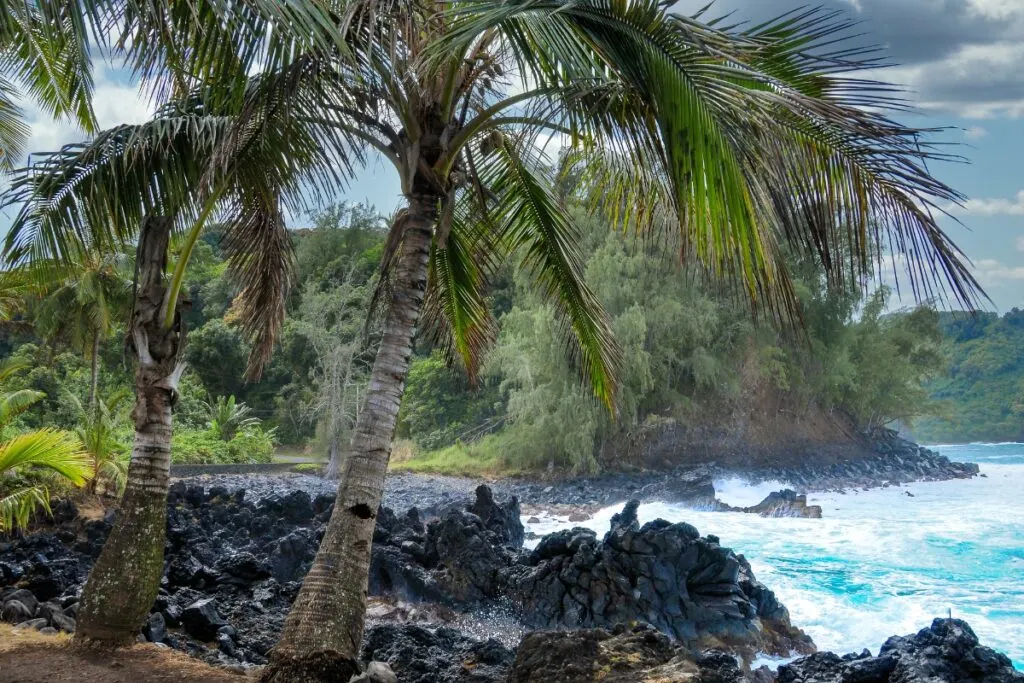
If you are interested in checking out the best rockhounding tools you can find them by clicking here (Amazon link).
What Rocks Are Found in Hawaii
The many volcanoes and beaches in Hawaii create many interesting rocks for collectors, such as:
Basalt

| Location | GPS Coordinates |
|---|---|
| Hualalai | 19.688684, -155.864722 |
| Haleakalā | 20.709410, -156.253815 |
| Kawailoa Beach | 21.621141, -158.083502 |
| Mahana Beach | 18.938441, -155.648094 |
| Papakolea Beach | 18.935982, -155.646589 |
Did you know that the Hawaiian Islands are almost entirely composed of basalt? Since Hawaii does not have a lot of silica, the magma from this state’s volcanoes is comprised of iron and magnesium, forming the perfect conditions for this rock.
Although basalt is usually dark grey to black in color, Hawaii basalt often mixes with olivine, creating a green-speckled rock that’s colorful and unique.
Since basalt is a volcanic rock, it makes sense that it is commonly found near Hawaii’s volcanoes, such as Hualalai and Haleakalā. For olivine basalt, check out Hawaii’s beaches, especially the “Green Beach,” Papakolea.
Sandstone
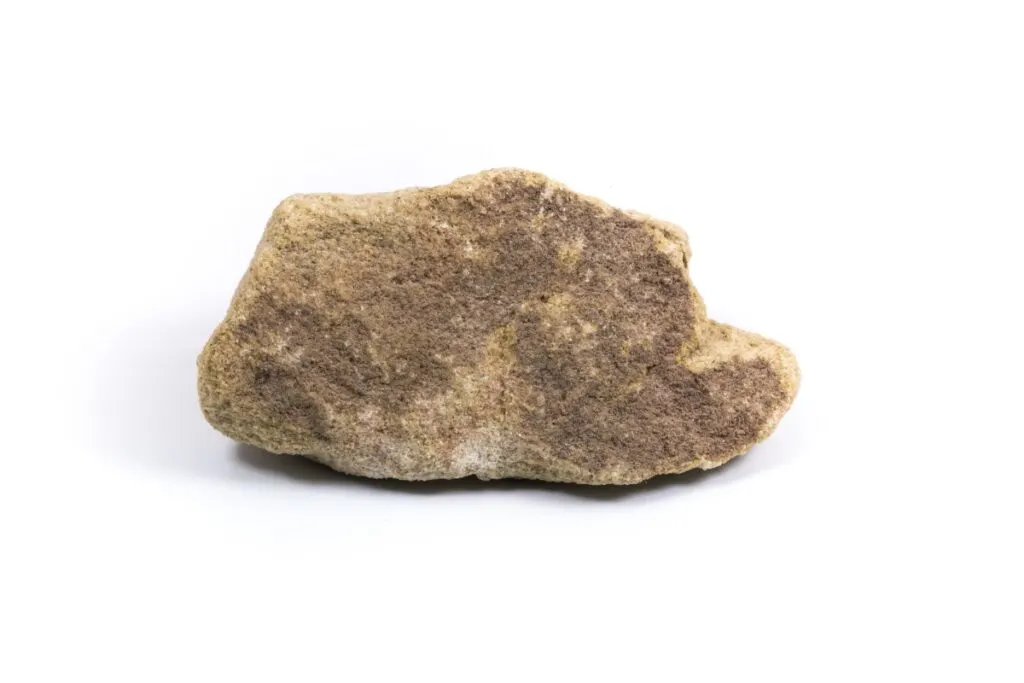
| Location | GPS Coordinates |
|---|---|
| Maui | 20.799066, -156.461593 |
| Kauai | 22.037117, -159.457758 |
| NiihauOahu | 21.895166, -160.138382 |
| Oahu | 21.490264, -158.219677 |
| Molokai | 21.102275, -157.071960 |
| Lanai | 20.812580, -156.984422 |
Calcareous sandstone is one of the most common sedimentary rocks in Hawaii. This type of sandstone is actually made from the calcareous skeletons of coral, which degrade and form aeolian sandstone.
Because this process takes a significant amount of time, sandstone is typically found on the older islands, but it can also be found on the younger island of Maui.
To find this type of sandstone, visit the older islands of Kauai and Niihau before moving on to a younger island, such as Maui.
Recommendation box: All tools and equipment you need for rockhounding and rock identification* (Amazon links):
1. Estwing Rock Hammer – Light, comfortable, and extremely durable hammer.
2. Estwing Geologist Pick – Classic and the most trusted paleo pick in the world.
3. Finder 12-inch Chisels – Heavy-duty chisels set with hand protection.
4. Mini Handle Shovel – This is a great tool for digging deep in the dirt.
5 Ironclad Utility Work Gloves – Breathable, but they also protect the areas requiring them most.
6. 3M Safety Glasses – Comfortable and efficient goggles for rockhounding.
7. Convoy 8+ UV Light – 365nm UV LED flashlight with a patented glass filter.
8. Wesley’s Jewelers Loupe – High magnification options (30X and 60X) with carrying case.
9. Mohs Hardness Kit – A specially designed kit for rockhounds
*All recommended products are personally tested and regularly used by experts from this website.
Agate
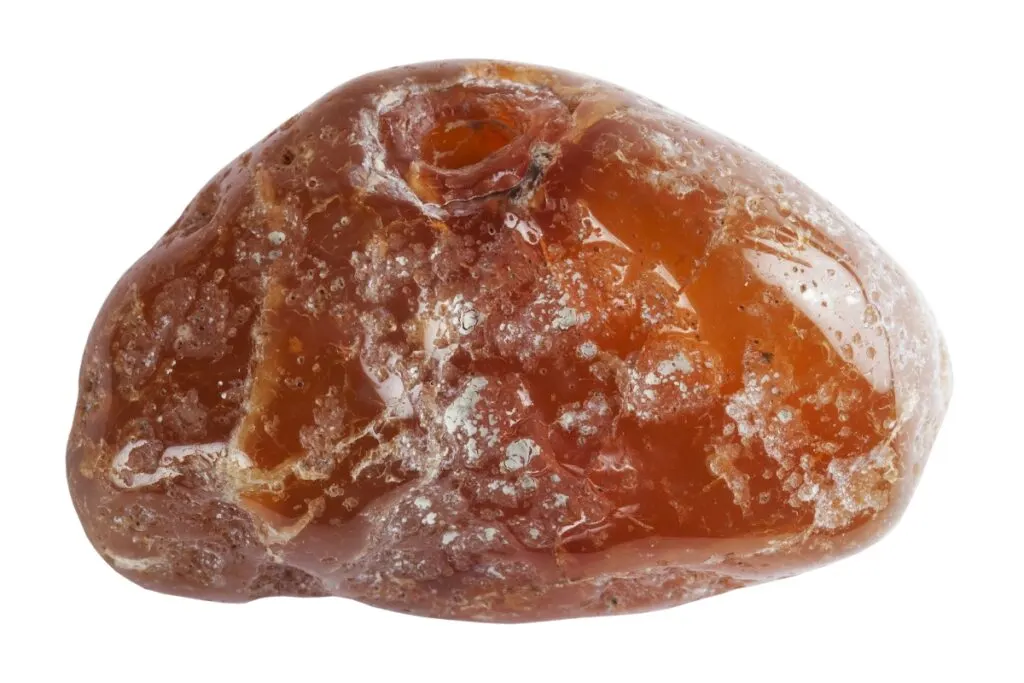
| Location | GPS Coordinates |
|---|---|
| Oahu | 21.490264, -158.219677 |
| Maui | 20.799066, -156.461593 |
| Kaunala Gulch Beach | 21.681029, -158.036263 |
| Diamond Head Beach | 21.255297, -157.805603 |
| Ke Iki Beach | 21.657792, -158.058682 |
No matter what beach you visit, you should be able to find agate with ease in the Aloha State. Fortunately, agate exists on most of Hawaii’s beaches, so you shouldn’t need to go out of your way to find them.
Book a rockhounding trip to the beaches of Oahu, Maui, and Honolulu to discover some beautiful pieces of agate.
Pele’s Tears
| Location | GPS Coordinates |
|---|---|
| Pu’u Huluhulu | 19.674430, -155.490813 |
| Mauna Ulu | 19.366645, -155.201095 |
| Mauna Iki Trail | 19.349831, -155.307830 |
| Kilauea | 19.406730, -155.283637 |
| Halema’uma’u Crater | 19.410040, -155.286132 |
When a volcano erupts in Hawaii, droplets of molten lava fly into the air and cool during their descent. After they cool, these droplets form glassy rocks that are called Pele’s Tears, named after the Hawaiian goddess of fire and lava.
In addition to Pele’s Tears, Hawaii is known for Pele’s Hair, which is when the wind spins molten lava into threads that resemble hair. Fascinatingly, the rocks even sway in the wind, just like normal hair!
Even though the volcanoes themselves are excellent sites for Pele’s Tears and Pele’s Hair, the wind carries these rocks many kilometers from the eruption.
This means you can find Pele’s Tears and Pele’s Hair on a road or trail, such as the Mauna Iki Trail, which is a fair distance away from a volcano.
Black Coral
| Location | GPS Coordinates |
|---|---|
| Au’Au Channel | 20.859420, -156.827950 |
| Maui | 20.908176, -156.687187 |
| Lanai | 20.803266, -156.809410 |
| Kauai | 22.062998, -159.768211 |
As Hawaii’s state gem, black coral has quite the reputation to uphold, but it lives up to all its praise. Black coral is prized for its striking ink-black color, and there are 14 different types of black coral that exist in Hawaii.
In the Aloha State, black coral is often found in the Au’Au Channel between Maui and Lanai, so it sometimes washes up on the beaches of these two islands. However, it’s best to leave the collecting of this coral to the professionals since it’s against the law to take it from the beaches.
TIP: A number of organic gems are created by certain animals living in the ocean. Find out the common gemstones that are found in the ocean in the article below:
Which Gemstones Come From The Ocean? Corals, Pearls & more!
What Minerals Are Found in Hawaii
The Aloha State has a unique assortment of minerals and gemstones, including:
Peridot/Olivine

| Location | GPS Coordinates |
|---|---|
| Oahu | 21.490264, -158.219677 |
| Papakolea (Green Sand Beach) | 18.935860, -155.646761 |
| Diamond Head | 21.261742, -157.805827 |
| Kilauea | 19.406730, -155.283637 |
In Hawaiian folklore, peridots are said to be the “tears of Pele,” the Hawaiian goddess of fire and volcanoes.
Fortunately, Hawaii is home to a “green beach,” which appears green due to the large amounts of olivine in the sand. Olivine and peridot are essentially the same mineral, the only difference being that peridot is gem-quality and olivine is not.
As you adventure in the Aloha State, you’ll notice that olivine is much more common than peridot, and it is fondly called the “Hawaiian Diamond.”
Without a doubt, the best place to find this lovely green mineral is Papakolea, the Green Sand Beach.
Quartz
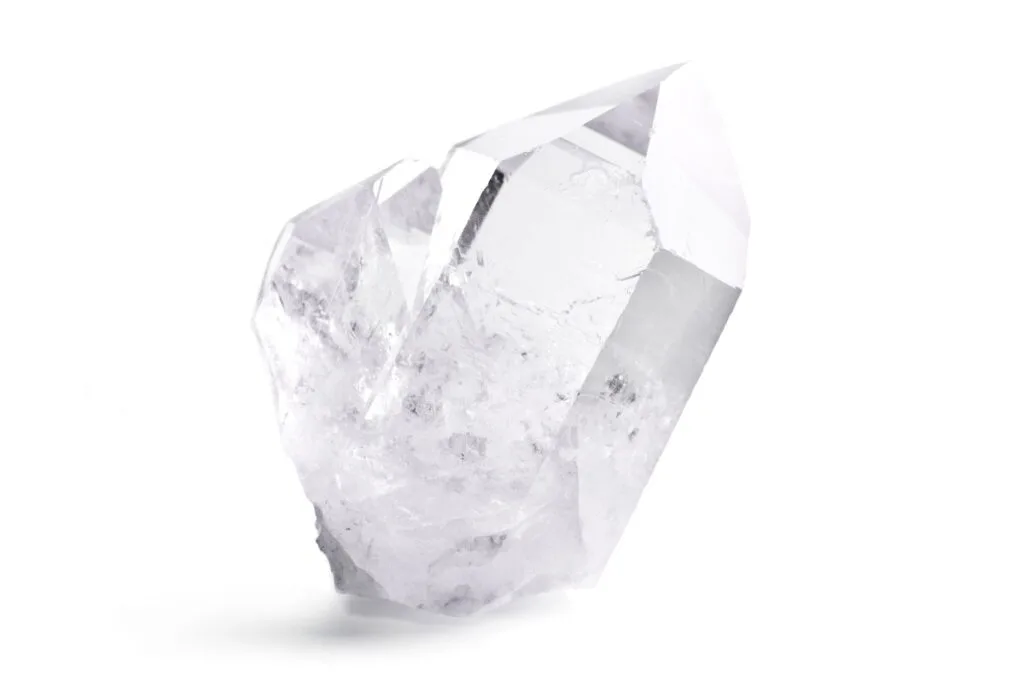
| Location | GPS Coordinates |
|---|---|
| Oahu | 21.490264, -158.219677 |
| Olowalu | 20.810889, -156.623147 |
| Mauna Kea | 19.820246, -155.467922 |
| Keolu Hills | 21.379124, -157.719479 |
| Kailua | 21.392931, -157.715430 |
White and clear quartz are the most common types of quartz found on Hawaii’s islands, and they are generally small in size. Even though quartz is one of the most common minerals on the planet, it’s not as common in Hawaii as it is in other U.S. states, but you can still find some in certain regions.
Olowalu, Mauna Kea, and Kailua are excellent locations for quartz crystals in the Aloha State.
TIP: Quartz is the main component in the sand on many beaches across the world. Find out the complete guide on finding quartz on a beach in the article below:
Can You Find Quartz on the Beach? It Depends How You Look
Labradorite
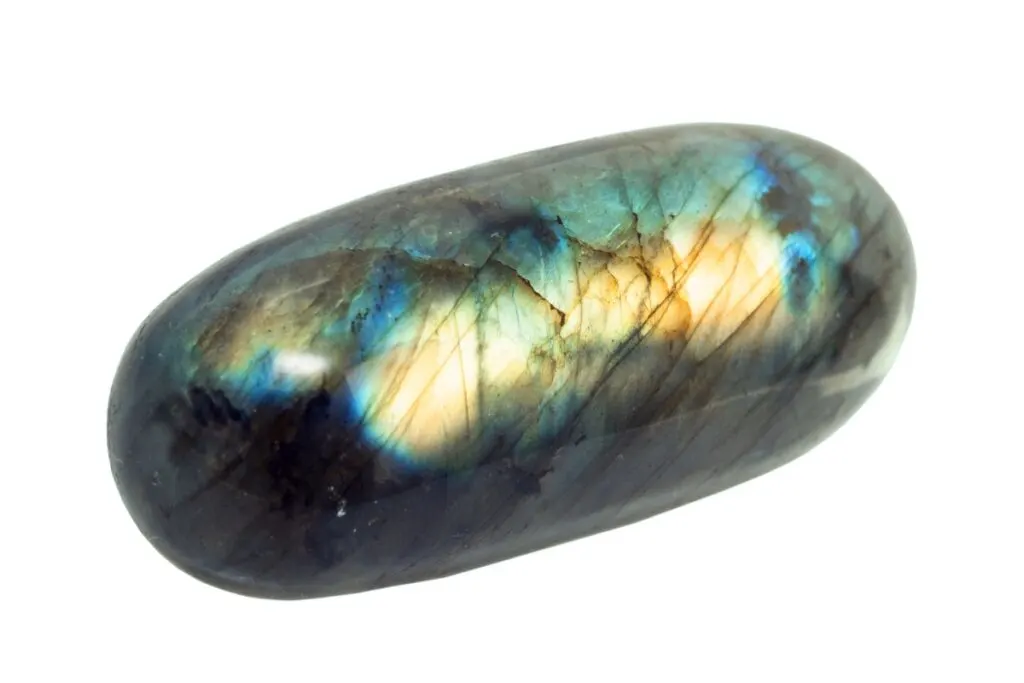
| Location | GPS Coordinates |
|---|---|
| Koolau Range | 21.449600, -157.900129 |
| Pohakea Pass | 21.433529, -158.093783 |
| Halema’uma’u Crater | 19.409918, -155.287247 |
| Oahu | 21.434084, -157.985305 |
| Kilauea | 19.406730, -155.283637 |
Labradorite, an iridescent mineral that comes in multiple colors, is commonly found with olivine basalt in Hawaii. Hawaiian labradorite is clear or yellow, and it resides near volcanoes and craters, essentially anywhere with volcanic activity.
Koolau Range, Pohakea Pass, and the Halema’uma’u Crater are the places where you are most likely to find this shiny and colorful mineral.
BTW: Do you want to know more about rock and mineral identification? The books listed below are the best ones you can find on the internet (Amazon links):
- Smithsonian Handbooks: Rocks & Minerals
- Gemstone & Crystal Properties (Quick Study Home)
- Ultimate Explorer Field Guide: Rocks and Minerals (National Geographic Kids)
FAQ About Common Rocks & Minerals in Hawaii
Now that you know about the common rocks and minerals that exist in Hawaii, learn more about the rare and valuable ones with the following FAQs:
What Rare Rocks Can You Find in Hawaii
Pele’s tears, black coral, agate, sea glass, and geodes are the rare rocks that you can find in the Aloha State. Pele’s Tears and Pele’s Hair are some of the most interesting rocks that you’ll see, especially since Pele’s Hair looks and behaves like normal hair!
Also, it’s important to note that you can find sea glass in Hawaii, and it’s one of the few stones that is legal to take home from the state.
Although it’s easy to locate agates and geodes in almost every U.S. state, you will not find black coral anywhere else in the U.S. With its ink-black coloring, it’s easy to see why this dark and beautiful gem is popular among tourists and locals alike.
Unfortunately, the terrain of Hawaii is varied, so it’s unlikely that you’ll find all these rocks together in a single area. Instead, it’s best to decide what stone you want to find and then take a look at the locations above to see where to go for that specific rock.
TIP: While the Hawaiian islands don’t boast vast gold deposits like California or Alaska, that doesn’t mean you can’t strike it rich here. Find out more in the article below:
Gold Prospecting in Hawaii: 5 Best Locations & Laws
What Rare Minerals Can You Find in Hawaii
In the Aloha State, some rare minerals you can find are opal, labradorite, augite, peridot, pearl, labradorite, and sunstone. Since the island and its terrain are relatively young, minerals are not as common as they are in other states.
With that being said, the minerals listed above have been found in certain areas of Hawaii and some are more common than others, such as peridot and labradorite.
The many beaches or volcanoes of Hawaii are great places to see these minerals, and the specific beach or volcano will depend on which mineral you want to find.
What is the Most Famous Rock or Mineral Found in Hawaii
The most famous gem in Hawaii is the state gemstone, black coral. Black coral grows in whip-like formations in the ocean, and Hawaiians use it for jewelry and medicinal purposes. Hawaii is home to 15 different types of black coral, and there are 200 different types worldwide.
It’s best to leave the collecting of black coral to the professionals, but you can spot it in the Au’Au Channel and the surrounding beaches.
BTW: If you are looking for the best UV light for rockhounding, find out my picks below (Amazon links):
- BEST OPTION: Convoy 8+ 365nm UV LED Flashlight with Patented Glass Filter
- BUDGET OPTION: Karrong Rechargeable 1200 Lumen 395nm UV Flashlight
- OPTION FOR INDOOR USAGE: Prime Upgraded Big Chip 396nm UV
Conclusion
It’s true that Hawaii’s terrain isn’t as old as the other U.S. states, but there is still plenty for rockhounds to do and see.
Peridot, Pele’s Tears, black coral, sea glass, geodes, agate, and more all exist in this state, a truly unique assortment of rocks and minerals that you will not find anywhere else in the United States.
So, before you put on your sunglasses and vacation in the tropical paradise of Hawaii, look around and see if you can spot some of these geological treasures!
TIP: Hawaii is a beautiful state where rockhounds can enjoy collecting various specimens while leaving the U.S. mainland. Find out the complete guide on rockhounding in Hawaii below:
Rockhounding in Hawaii: Best Locations & What You Can Find
